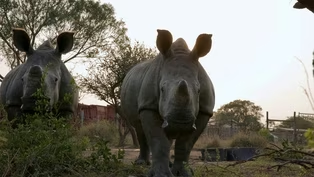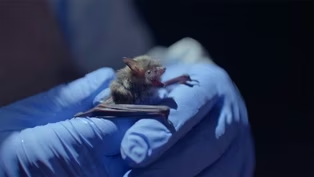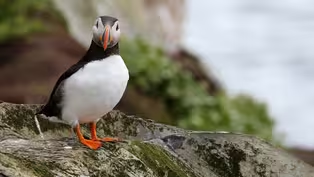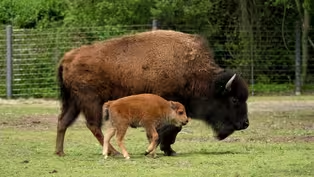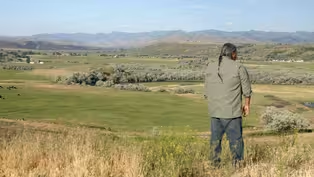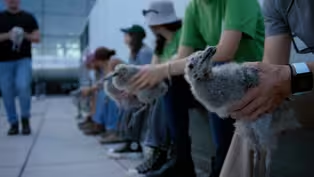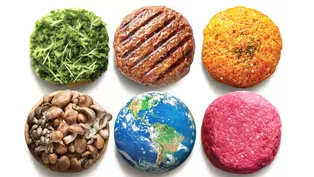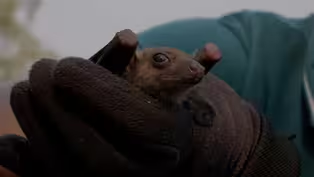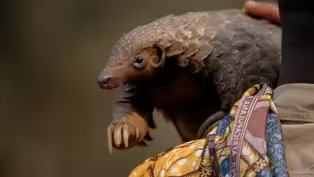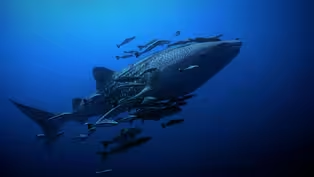
The Serpent's Lair | WILD HOPE
Special | 11m 50sVideo has Closed Captions
These two reptiles keep an entire pine forest held together.
In the face of extreme habitat loss, wildlife biologist Dr. Chris Jenkins puts an ambitious plan in motion to save two uniquely American reptiles, the eastern indigo snake and the gopher tortoise, and the forest they call home.
Problems playing video? | Closed Captioning Feedback
Problems playing video? | Closed Captioning Feedback
Major support for NATURE is provided by The Arnhold Family in memory of Henry and Clarisse Arnhold, Sue and Edgar Wachenheim III, The Fairweather Foundation, Charles Rosenblum, Kathy Chiao and...

The Serpent's Lair | WILD HOPE
Special | 11m 50sVideo has Closed Captions
In the face of extreme habitat loss, wildlife biologist Dr. Chris Jenkins puts an ambitious plan in motion to save two uniquely American reptiles, the eastern indigo snake and the gopher tortoise, and the forest they call home.
Problems playing video? | Closed Captioning Feedback
How to Watch Nature
Nature is available to stream on pbs.org and the free PBS App, available on iPhone, Apple TV, Android TV, Android smartphones, Amazon Fire TV, Amazon Fire Tablet, Roku, Samsung Smart TV, and Vizio.
Buy Now
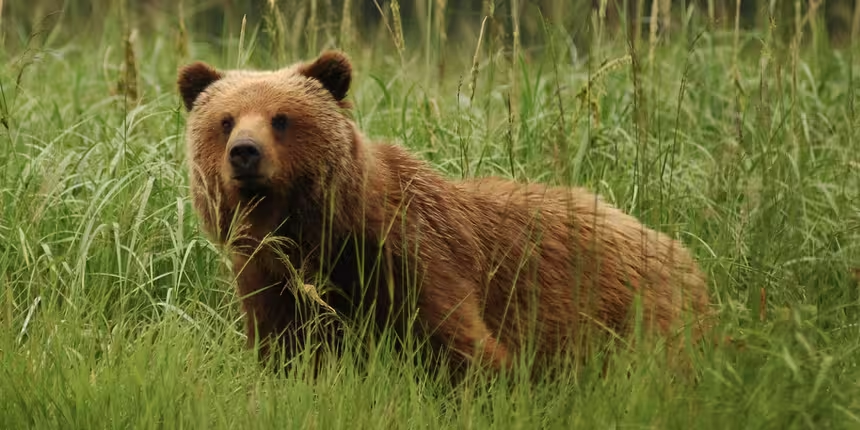
Explore More Ways to Watch
Bring the beauty and wonders of wildlife and natural history into your home with classic NATURE episodes.Providing Support for PBS.org
Learn Moreabout PBS online sponsorshipMore from This Collection
WILD HOPE is a new series of short films that highlights the intrepid changemakers who are restoring our wild places and sparking new hope for the future of our planet.
Video has Closed Captions
How does a densely populated nation like Singapore transform into a lush green oasis? (14m 51s)
Video has Closed Captions
For decades, rhinos have been the face of poaching. (16m 28s)
Video has Closed Captions
As a deadly fungus devastates North America’s bats, scientists are testing new ways to save them. (14m 47s)
Video has Closed Captions
In the Westman Islands, one community has banded together to save lost young puffins. (13m 15s)
Video has Closed Captions
Sixty million American bison once thundered across the prairies of North America. (18m 52s)
Reclaiming Bear River | WILD HOPE
Video has Closed Captions
The Bear River was once a lush area with wetlands, hot springs, and abundant wildlife. (17m 25s)
Building for Birds | WILD HOPE
Video has Closed Captions
Millions of migrating birds pass through our yards, but glass windows pose a deadly threat. (16m 3s)
Mission Impossible | WILD HOPE
Video has Closed Captions
Meet the genius behind the plant-based Impossible Burger. (39m 41s)
Pangolin Protectors | WILD HOPE
Video has Closed Captions
Due to the demand for their scales, pangolins are the most trafficked animal in the world. (12m 24s)
Way of the Elephants | WILD HOPE
Video has Closed Captions
Elephant migration corridors in India are a necessary thoroughfare for one of the largest animals. (15m 11s)
Whale Shark Homecoming | WILD HOPE
Video has Closed Captions
A renowned spiritual leader is inspiring fishermen to become guardians of the world’s biggest fish. (16m 49s)
Providing Support for PBS.org
Learn Moreabout PBS online sponsorshipNARRATOR: All around the world, the faces of popular conservation efforts are creatures you already know, and perhaps love.
But in the Southeastern United States, people are on a mission to protect two remarkable animals that are just as worthy.
They're just a little less, furry.
♪ CHRIS: You might think of things such as lions and bears.
But we have these endangered reptiles that are so important.
We should all care about eastern indigo snakes, gopher tortoises, just like we care about wolves and tigers.
We need to try to work to save all of them.
♪ Indigo snakes are the largest native snake we have in North America.
I like to call them a predator of predators.
♪ It's a snake-eating snake.
♪ These are animals that keep predator populations from exploding, keeping the world in balance.
♪ NARRATOR: Indigos use strength, not venom, to overpower their prey.
But with humans, they are harmless, even docile.
CHRIS: I can put a seven- and-a-half foot snake in the hands of a three-year-old child.
They really become almost like a gentle giant.
They're also one of the most beautiful snakes that we have on the planet.
♪ They're just great ambassadors for snakes in general.
♪ Unfortunately, their populations have declined significa.. Indigo snakes are listed on the Endangered Species Act as threatened.
♪ NARRATOR: The greatest threat indigo snakes face is the loss of wild habitat to development.
As their range has diminished, each remaining pocket becomes more critical.
Those to the north have harsh winters, and here, the snakes rely on another reptile's ingenuity to survive.
(birds chirping) ♪ CHRIS: Gopher tortoises are one of the best examples in the world of a keystone species.
NARRATOR: That means they help maintain the abundance and diversity of other species in the ecosystem.
♪ CHRIS: So I would say, perhaps more than- than any animal, you know, it excites me to find these guys.
'Cause I really, I kind of think of 'em as like the glue that holds everything together.
♪ These front legs are really like large spades.
Like a gopher, they end up digging into the ground, and they end up creating these burrows that go maybe 20, 30 feet.
NARRATOR: The burrows are what help indigos survive the winter.
♪ CHRIS: Once you get to those depths, the temperatures are much warmer than the surface.
NARRATOR: The burrows don't just help snakes.
CHRIS: Over 350 species of other animals.
Insects, mammals, birds, reptiles, amphibians.
They use the burrow that the tortoise creates.
Without this animal, hundreds of other animals would disappear.
The indigo snakes need the tortoises.
They need the burrows.
NARRATOR: The snakes, in turn, are vital to other creatures.
Without them, the predators they keep in check, venomous vipers and bird eaters, would multiply, reducing prey and throwing the ecosystem further off .. ♪ Both of these reptiles are stewards of this forest.
But for them to thrive, the forest they live in must too.
CHRIS: The longleaf pine is really a special thing.
Almost like a gem of the South.
NARRATOR: Over time, that jewel has lost its luster.
Longleaf pine savannas once blanketed the American Southeast.
(machinery whirring) But centuries of deforestation, construction, and road building have decimated them.
♪ CHRIS: We were at a point not so long ago, where we were down to say three percent of the original ecosystem.
♪ And when those landscapes become fragmented, it can become a real problem.
Every year, here in South Georgia, snakes are found dead crossing roads.
♪ You can't just conserve the indigo snake in a vacuum.
You need to care about the longleaf pine.
You need to care about tortoises.
You need to care about the whole ecosystem.
♪ NARRATOR: Chris helps lead a three-pronged conservation strategy.
♪ Step one.
Buy up the most important tortoise habitat in Georgia.
CHRIS: This looks like a pretty good burrow.
Why don't we scope this one?
NARRATOR: His team searches for tortoise hotspots, then monitors hundreds of burrows for activity.
CHRIS: We have almost half of the gopher tortoises in the state of Georgia, now protected in some form of conservation land.
RYNE: Got a tortoise!
CHRIS: Nice!
That's exciting.
RYNE: Definitely.
♪ CHRIS: Oh, that's great.
You can see its face.
NARRATOR: Step two is to restore the forest where necessary.
CHRIS: We've planted somewhere between half a million and a million longleaf pines.
It's a huge accomplishment.
But we're also trying to restore the ground cover.
NARRATOR: A healthy longleaf pine savanna has ample room between trees for a rich variety of vegetation to flourish.
♪ Right at tortoise height.
CHRIS: All of the grasses and forbs are those important green groceries that the tortoise feeds on.
♪ NARRATOR: Left unchecked, other trees can move in and block sunlight from reaching this understory.
CHRIS: So if we wanna have habitat for gopher tortoises and indigo snakes, we need to use an important tool.
Fire.
♪ NARRATOR: These pine forests naturally burned every two or three years, until people began suppressing the wildfires.
♪ CHRIS: This is the smell and the feel of conservation in action.
♪ If we never burned this tract of land, a lot of other species that would've shade out all of those native grasses and forbs, then the tortoise would leave.
♪ NARRATOR: Creatures that evolved in this landscape can cope with these passing blazes.
Some, with help from the tortoises.
♪ This healthy habitat, full of burrows, tortoises and trees, is essential for the final step in the indigo conservation effort.
Increasing the number of snakes.
♪ The Orianne Center for Indigo Conservation is the only facility of its kind in the world.
And it's where the future of the species is being secured.
♪ Dr. James Bogan breeds indigos to repopulate areas where they've died off.
♪ JAMES: This breeding program is the hope for the future.
Right now we have 123 eggs.
When they start hatching, that's the best, you know, you start seeing the- the babies come out, and all right, I know that one's gonna make it.
It really makes this all worth it.
NARRATOR: Caretakers hand raise every snake for the first two years of its life.
♪ JAMES: They feed them, they care for them.
They clean up after them.
They- they get 'em ready, growing up, ready to take on the world.
♪ ♪ This little fella here is destined to be released back in the wild.
On the release day, we'll go up to those individual burrows, and one at a time, place the snake into the burrow.
The indigo snake will go back to the same burrow every winter.
We got the news that they're seeing babies in the wild.
They're growing up and making babies of their own.
That's what the whole project's about.
This is the future of the wild population.
Does make me proud.
(James laughing) ♪ CHRIS: Working together, we can scale up our impact.
♪ We've now released over 300 indigo snakes into the wild.
We're restoring tortoise populations.
And we're restoring our longleaf forests.
We have a lot of great signs that give us hope.
♪ ♪ ♪ ♪

- Science and Nature

Explore scientific discoveries on television's most acclaimed science documentary series.













Support for PBS provided by:
Major support for NATURE is provided by The Arnhold Family in memory of Henry and Clarisse Arnhold, Sue and Edgar Wachenheim III, The Fairweather Foundation, Charles Rosenblum, Kathy Chiao and...

